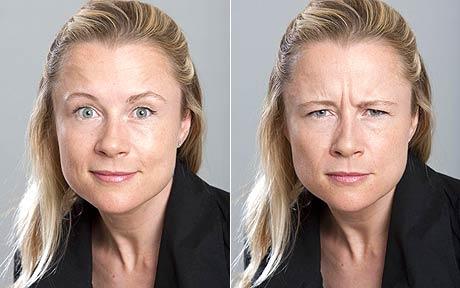
Photo: JEFF GILBERT
"Just a few injections around your eyebrows,” recommends Dr Nick Lowe. Botox. It’s a bit like being offered drugs. The excitement. The fear. The shame. Increasingly, the ubiquity: about 500,000 people have botulinum toxin syringed into their dermis each year in Britain, in the pursuit of beauty, if not truth.
Yet despite its popularity, Botox is not regulated in this country and, should you come across a shoddy practitioner, you could end up with a petrified, lopsided face. But Dr Lowe, aka Dr Botox, is one of the country’s most celebrated dermatologists. So when he tells me that my wrinkles are nothing to worry about, and that he can relax the muscles I use when I frown (which I do as I type, over the years leading to droopy, basset-hound eyelids) I am powerless to resist.
A few small pricks later, my eyes open beautifully wide, just as they used to.
“I first had Botox in my early thirties, when I lost my job,” says Laura, a friend who works in advertising in London. “I wanted to feel confident, on top of things. It is amazing how different you feel about yourself, and your face, after Botox.”
For me, this is exactly the problem. When I smile, my face doesn’t smile with me. In blue moments, not only do my eyebrows stay perky, but I can hardly move them. It really annoys me.
A recent study by psychologists at Columbia University suggests that, by interrupting the feedback loop between your brain and your facial expressions, Botox causes you to feel emotions less deeply. In other words, if you can’t look angry your brain will experience the anger less strongly.
David Havas, a psychologist at the University of Wisconsin-Madison, even suggests facial immobility can impair relationships.“Facial mimicry is a key part of social interaction,” he says.
“If our expression cannot respond in conversation, it may influence the degree to which we bond. We’ve only recently started to do cognitive research into Botox, but there are real effects from its use we don’t yet understand.”
Ha! But we look fabulous! comes the cry from the Botox camp. And many of us do. Having had Botox, I’ve developed a laserlike ability to recognise it in my peers. These women may look smooth but, except for a few truly magnificent examples, they also look false.
“I like the way I look, but I liked it best as my secret,” Laura says. “Now I can see it in other people and frankly it looks a bit desperate.”
A bit like silicone implants, isn’t the look – well – over?
I like to cycle to the local market to buy healthy organic vegetables, yet my face contains a substance so toxic that al-Qaeda sought to use it as a weapon.
Increasingly we are turning toward authentic experiences and holistic living with an emphasis on happiness and wellbeing. Yet to develop a taste for Botox is to chain yourself to an expensive addiction (one shot costs from £200 and only lasts a few months) and one that makes you focus on your appearance – and, maybe, your neuroses.
Even Hollywood has had enough. Directors Baz Luhrmann and Martin Scorcese have announced they are bored with actors with a limited facial range. Cindy Crawford is among those who have jacked the habit, as is Dannii Minogue (after she was derided for looking “plastic” by the X Factor audience).
Make-up magnate Bobbi Brown is an outspoken naysayer. “I tried Botox and really didn’t like it,” she says. “Having no expression isn’t natural and being beautiful isn’t about perfect, cookie-cutter looks.”
Could we be ready for a post-Botox era? Perhaps it is time to give up the quest for artificial perfection. Let us rediscover what Gerard Manley Hopkins called “Pied Beauty” and, like him, say: “Glory be to God for dappled things”.
Original article published in The Daily Telegraph, in August, 2010

